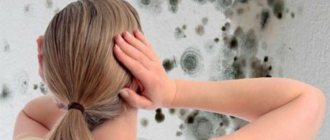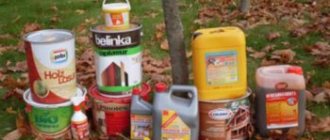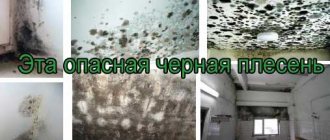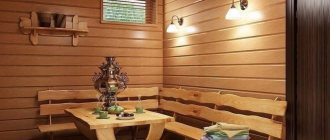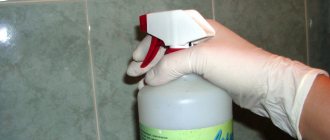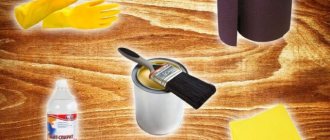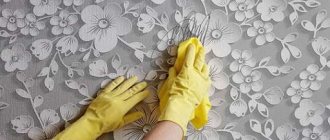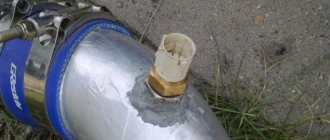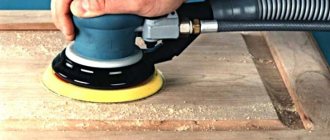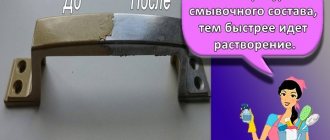Reasons for appearance
Fungi love wood surfaces because the fibers contain nutrients. In addition, wood's ability to absorb moisture creates a favorable environment for the proliferation of microorganisms. Fungi infect wood in two ways. The first method is that fungal spores, which are constantly present in the air, enter the microcracks of the tree and, under suitable conditions, germinate. Factors contributing to the development of wood fungi:
- increased humidity and condensation;
- insufficient ventilation;
- temperature changes;
- prolonged interaction with the soil;
- freezing of wood;
- groundwater.
The second method of infection is the transfer of spores in contact with rotten timber. For this reason, it is not recommended to store timber next to spoiled wood. Fungi reproduce by spores that are easily spread by wind, animals, birds, insects, and remain on clothes and shoes. Infection of timber with fungi can occur during storage and transportation. Mold affects all types of wood used in construction, and infection occurs at any time of the year.
The ideal temperature for fungi is +15-20 degrees, humidity more than 70%. To get rid of fungus, wood moisture content should not exceed 20%.
Description of the house mushroom
White house fungus appears as small white dots on the surface of the tree, then they gradually enlarge, turning into a woolly or slimy coating, under which the tree becomes more and more brown and gradually collapses. The spores below are fibrous-velvety with swollen edges, and the upper part looks like a silvery web.
The house parasite secretes special enzymes that loosen infected wood and make it a nutrient medium. Under these conditions, it spreads even more. The bodies of the fungus emit an extremely unpleasant characteristic odor. In buildings, it most often affects the lower floors and basements. It is difficult to fight a house parasite that has once settled on logs or boards.
Types of mold
Molds are a group of organisms of the fungal kingdom that form branching hyphae without pronounced fruiting bodies. Mold is not a scientific name; in colloquial speech it is the name given to colonies of fungi. Currently, about 100 thousand species of fungi have been described, most of which are microscopic molds.
There are many ways to classify molds - by morphology, habitat, pathogenicity for humans. In everyday life, it is common to divide fungi by color:
- black fungus - has a large number of strains, multiplies quickly, is dangerous because it can not only destroy wood, but also develop in the human body;
- white fungus - affects food, plants, wooden surfaces, is less dangerous for humans, but can cause allergies;
- blue mold - often affects pine, leads to rot and gives the wood a bluish-gray tint.
In addition to fungi, actinomycetes are dangerous for wood - bacteria similar to fungi and capable of forming hyphae. They soften the rock, just like mold fungi develop with high humidity and the absence of special treatment.
First steps when colonies are detected
You need to think about how to get rid of mold immediately after it is discovered. Delay will lead to the fact that it will be almost impossible to cope with the fungus; it will destroy the furniture. The first steps include the following steps:
- creating optimal humidity and temperature;
- providing ventilation;
- eliminating fungus using a knife with a sharp blade or a metal brush;
- burning of purified fungus;
- washing with a detergent solution;
- antiseptic treatment for furniture.
But it should be noted that such actions do not always lead to a positive result. They are only a temporary salvation, since if the mold is firmly ingrained into the surface, then it cannot be dealt with this way.
Processing methods
Mold and mildew quickly darken and destroy wooden structures. Having seen the first signs of infection (discoloration), you should immediately begin treatment with disinfectant compounds. At the initial stage of development of pathogenic microorganisms, the spots are barely noticeable, but if left untreated, they quickly increase in size. It is important to remember that superficial removal of mold from wood will not achieve the desired effect - the spores grow at least 3-5 mm deep. Stages of mold removal:
- Infected areas are cleaned. The easiest way is to remove rot from the surface with a spatula, and if necessary, clean the inner layers with cutting tools (knife, chisel). You can also use a sander. The scale of impact is determined by the depth of fungal penetration. Sometimes it is enough to remove a thin layer.
- The removed wood is destroyed. Incineration is preferable.
- The cleaned wood is thoroughly washed with a solution of laundry soap.
- Dry and treat with an antiseptic.
For treatment, folk remedies and special anti-fungal compounds are used.
Folk remedies
Traditional methods of destroying mold fungi do not require significant financial costs, but have only a short-term effect. Popular methods include:
- treatment with heated resin;
- applying diluted silicate glue;
- to treat boards, 100 grams of copper sulfate are diluted in 10 liters of liquid;
- the use of Whiteness, a chlorine-containing agent for bleaching and disinfection. When fighting fungi, Whiteness is used in high concentration, diluted with water in proportions 1:1;
- treatment with hydrogen peroxide or ammonia;
- use of boron solution;
- use of acetic acid.
Folk remedies can be hazardous to health and are less effective than special formulations for antifungal treatment. It is acceptable to use for preventive purposes; with significant mold damage, complete destruction of pathogens is rarely achieved.
Special compositions against fungi
Antifungal compounds for wood contain fungicides - chemicals that suppress the activity of fungi, destroying spores and preventing the development of colonies. A properly selected antiseptic against fungus on wood will eliminate hotbeds of mold growth. Available in the form of varnishes, paints, impregnations. The composition is water-soluble, water-repellent, oil-based, solvent-based and combined.
Based on the level of absorption, they are divided into glazing (do not change the color and texture of the wood) and covering (affect the texture of the material).
Based on the period of action, they are divided into short-term protection and long-term prevention.
Well-proven products for treating wood against mold and mildew include products from the following companies: Tikkurila, Pinotex, Belinka, Neomid, Senezh. The compositions are safe, have certificates of conformity, and are recommended for interior and exterior work. Apply following the instructions and paying attention to the required temperature and dosage.
Why is fungus dangerous?
The house parasite harms not only wooden structures, it is also dangerous for humans. The fruiting bodies of the fungus emit an unpleasant odor, they scatter small spores, which, if they enter the respiratory tract and lungs, can cause allergic reactions, provoke respiratory diseases and asthma attacks. In sensitive people, inhalation of these particles causes toxic poisoning. For this reason, all wooden elements that the fungi have managed to infect must be destroyed. The fight against them can take a long time.
How to choose the right tool and method
The choice of protective agent is determined by the conditions of subsequent operation. The main difference between antiseptics is their composition, which may differ in the amount of toxic substances, the intensity of the odor, and the speed of drying.
When choosing an antiseptic, it is important to pay attention to the validity period stated by the manufacturer after treatment. As a rule, the effect of antiseptic agents is 3-5 years. Another important characteristic is the required number of layers during processing and the composition consumption per 1 sq.m. In addition, you should find out whether the product is used for internal or external treatment.
If you have allergies, you should pay attention to the special symbol indicating that the product is hypoallergenic. In dry living rooms, you can limit yourself to varnishes and paints; odorless compositions are preferable. In steam baths and saunas, wood is treated with heat-resistant compounds.
To remove blue and gray fungal stains from the surface of wood, as well as restore the natural color, treatment is carried out with special bleaching compounds.
When large spaces are infected with dangerous strains, it is advisable to call specialists to remove mold. Specialized companies will select an effective composition for killing fungi and carry out the treatment using special equipment.
Processing Features
When treating wood against fungus and mold, the following main points are taken into account:
- the antiseptic is applied to a dry, clean surface, after removing the mold from the infected area;
- cover with the second layer after the first has dried;
- use a brush, sponge, roller or hydraulic remote control;
- protect your hands with rubber gloves, your face with a respirator.
After using modern antiseptics and eliminating factors favorable to the development of fungi, in most cases the infection does not recur. Often, fungicides destroy all pathogenic microorganisms present on the surface. The composition of universal products allows you to protect wood not only from fungi, but also from UV rays and insect pests.
White sponge
White sponges, thanks to the huge amount of wood spent on arranging the garden and landscape, lead a satisfying life and thoroughly spoil it for pest control specialists. There was once an opinion that heat treatment followed by impregnation with a chemical composition perfectly protects against white sponge.
However, as practice has shown, this fungus actively breaks down the protective chemical layer, processing and releasing poison in its cells, and then easily destroys the woody solids. The vitality and unpretentiousness of this species are amazing: it lives well even on a mineral surface.
Prevention methods
If the cause of fungal development is not eliminated, the situation may recur after treatment. To protect wood from infection, take the following actions:
- in case of dampness in basements and attics, check the condition of the foundation and roof, improve waterproofing;
- fungi do not tolerate sunlight, it is important to ensure the penetration of UV rays;
- improve air circulation in the room, use fans if necessary;
- the room in which mold forms is dried, air heaters can be used;
- avoid temperature changes.
To prevent the development of mold, a wooden house must be heated in winter. It is important to monitor the condition of the basement and cellar, since these rooms are most susceptible to infection. In apartment buildings, mold can grow in bathrooms and wood paneling.
Once every 3-5 years, it is recommended to re-treat the wood with mold and mildew agents. Even with effective antiseptic compounds, it is easier to prevent the development of fungus than to completely eliminate it.
When building a wooden house, it is important to immediately cut through the openings for air circulation and to prevent dampness.
Appeal to professionals
Turning to professionals is an expensive procedure, but it will be 100% effective and will rid your home of the harmful effects of pathogenic microorganisms. This is a whole process that requires preparation. It is carried out according to the algorithm:
- identifying the cause;
- restriction of all furniture and structures from contact with other things;
- ensuring optimal climatic conditions for work;
- complete destruction of mechanical fungus;
- chemical treatment;
- drying and restoration measures, if required;
- coating with antiseptic and varnish.
Of course, the scope of work varies depending on the conditions (outdoors or indoors, the size of the surface being treated), and the type of formation.
